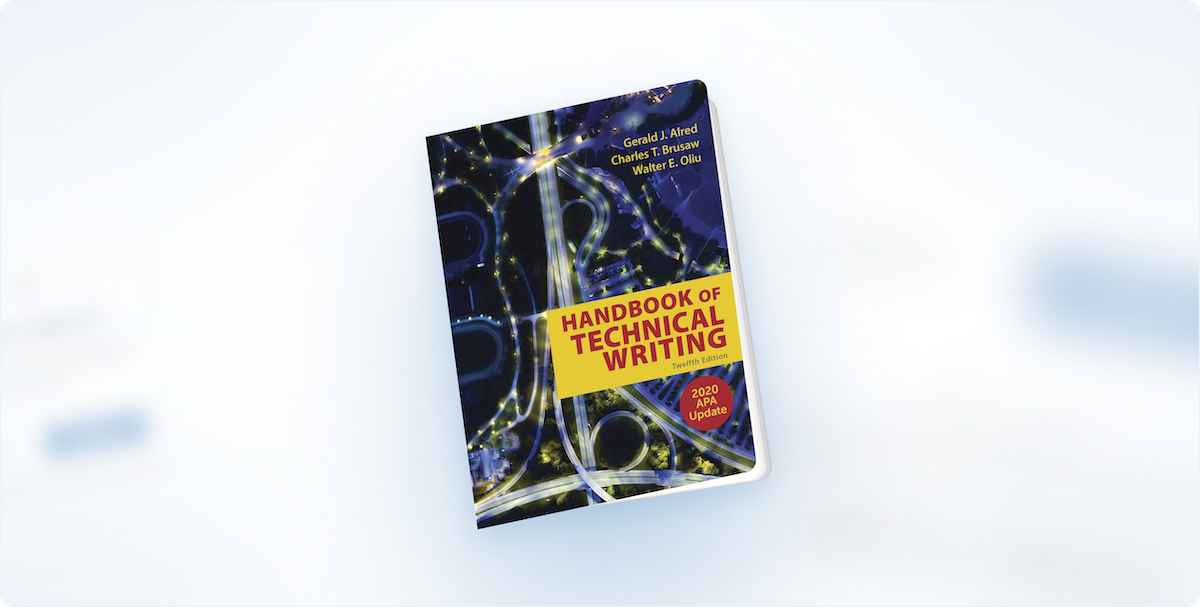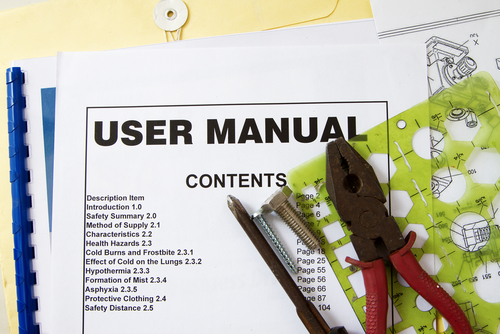Indeed, business, engineering, healthcare, and technology industries prefer good quality written work. No matter whether a person is a student, worker, or simply an individual who needs to write formally or informally in any business, understanding how to write effectively can only pay off.
The Handbook of Technical Writing by Gerald J. Alred, Charles T. Brusaw, and Walter E. Oliu is one of the outstanding picks for a technical writing book. This book is reliable and recommended by many students, teachers and other professionals all over the country. It gives good guidelines, practical examples, and recommendations on how technical documents can be written.
This article aims to describe what the book is, for whom it is suitable, what the main lessons that one can learn from this book, how it stands out from other books on writing reviews, and how professionals can use it practically.
What Is the Handbook of Technical Writing and Why Is It Important?
The Handbook of Technical Writing is like any other reference book that aims to assist individuals in enhancing their technical and professional writing. This book was published for the first time in 1982, and now, it is the 13th edition.
This text is not an ordinary textbook, as different sections are organized in alphabetical order, and the heading is characteristic of the handbook. This makes it easy to get the needed information within the shortest period. Hence, the proposed educational program comprises many significant topics, such as:
- Writing clearly and professionally
- Grammar and punctuation rules
- How to format business and technical documents
- How to write emails, reports, and proposals
- Using visuals like charts and diagrams
Due to the information provided in it, as well as the pragmatic structure of this handbook, it is recognized as one of the best in the area of technical writing.
Who Should Use the Handbook of Technical Writing?
All people could stand to use this book as their reference material for any topics they need to write on. Some of the groups that chiefly employ it include;
1. Students and Teachers
- Known to be employed in courses for business and technical writing in colleges.
- Enables students to develop good and polished writing skills
- Covers the topics of how to format essays, reports, and presentations.
2. Professionals in Technical Fields
- It is used in writing manuals, reports, and proposals by engineers, information technology personnel, health care practitioners, and scientists.
- It helps to simplify information that is otherwise hard to decipher.
3. Business Writers
- Ideal for composing emails, Internal and external memos, as well as business reports.
- Aids business organizations in maintaining proper and formal communication.
4. Freelance and Online Writers
- It is best for content writers and bloggers who deal with the technical niche.
- Tells the reader about website writing and writing for web readers
5. Companies and Organizations
- Tremendously helpful for any of the teams that are involved in developing instructional manuals and training guides.
- Helps maintain consistent and professional writing across different documents
This handbook is helpful for anyone who wants to write in a clear, structured, and professional way.
Key Takeaways from the Handbook of Technical Writing
The mentioned handbook provides much information, but here is the list of the most valuable lessons that should be noted:
1. Clear and Simple Writing Is Best
This being the case, then, writing technical documents should not be a complicated language that is hard to comprehend. The book teaches how to:
- Avoid unnecessary words
- Use short, clear sentences
- Organize information logically
2. Organization Matters
In the process of writing documents, it is important to ensure that they are well arranged in a way that can easily be understood by the reader. The handbook explains:
- Instructions for preparing reports, procedures, and improving proposals
- Generally, the best ways of presenting the information to various audiences
3. Grammar and Style Are Important
It is a guide to correct grammar and punctuation that will assist the writer to avoid common fails in writing and make their writing look more professional.
4. Visual Aids Improve Communication
The book also elaborates on the use of charts, graphs, and tables in order to make it easier for one to understand information.
5. Digital Writing Is Different from Print Writing
Therefore, it is appropriate to state that the social practice of writing has been revolutionized by the communication technology known as the Internet. The handbook includes tips on:
- Writing for websites and blogs
- Word processing and the screen presentation of text for better reading ability
- Best practices for email and social media writing
It is essential for writers to adopt the following practices to enhance the professionalism of the work they produce.
How Does the Handbook of Technical Writing Compare to Other Writing Books?
There are numerous books on the subject of writing, but few may offer as much relevant information as the Handbook of Technical Writing does; furthermore, the fact that it is based on practical tools and follows a very clear structure. Here is how the framework is in relation to other available writing frameworks:
| Not as detailed lacks industry-specific examples | Strengths | Weaknesses |
| Handbook of Technical Writing | Easy to use, alphabetically organized, covers many types of technical writing | Some may prefer a textbook-style guide |
| The Elements of Style (Strunk & White) | Short and focused on grammar and style | Not meant for technical writing |
| Technical Communication (Markel & Selber) | In-depth textbook with exercises | More academic, not as quick to reference |
| Purdue OWL (Online Writing Lab) | Free and available online | Not as detailed and lacks industry-specific examples |
Consequently, the Handbook of Technical Writing is one of the most convenient ones for professionals seeking a fast and efficient reference.
How Professionals Can Use the Handbook to Improve Their Writing
In fact, this handbook can be useful to writers of any level of experience. It is important to note here that the following are the ways through which the professionals can apply them:
1. Writing Clear and Effective Reports
- As mentioned in the handbook, make sure to use the templates for creating coherent and comprehensive reports
- Find out how to disseminate information qualitatively for various audiences
2. Creating Easy-to-Read Manuals
- One has to apply the guidelines provided in the handbook so that the instruction manuals can be more understandable.
- It focuses on strategies for demystifying complex information by applying a step-by-step approach.
3. Improving the Texts of Emails and Business Writing
- Such technical details may include IT instructions in the handbook about the appropriate professional tone and format of an email.
- Read our tips on how to come up with powerful subject lines and brief and well-focused messages.
4. Improving Digital and Online Content
- Before writing the content for the website, one should refer to the guidelines highlighted in the handbook about writing material that is suitable for the World Wide Web.
- Understand the techniques of making the text suitable to read online
5. Editing and Proofreading for Accuracy
- The handbook is equipped with editing checklists to enhance grammar, clarity, and consistency.
These are highly useful in most positions and should assist the individuals concerned in making their communication more efficient.
Final Thoughts
The title of the book The Handbook of Technical Writing can be considered a helpful source for learners, employees, employers, and businesses. It alphabetically lists some of the most common mistakes, is easy to follow, and has useful tips for improving technical writing. If you want to:
- ✔ Improve your writing skills
- ✔ Write better reports, emails, or manuals
- ✔ Learn technical and professional writing tips
If you need an easy-to-understand guide that will take your readers through the process of developing a business continuity management program in an easy-to-follow manner, then this handbook is perfect for you. No matter if you are at the initial stages of writing or if you are a professional who requires a brief on how to write, then this book will suit you.
Looking for more writing tips? To get more tips about writing, read other articles on TechTonic Blogs.




Leave a Reply